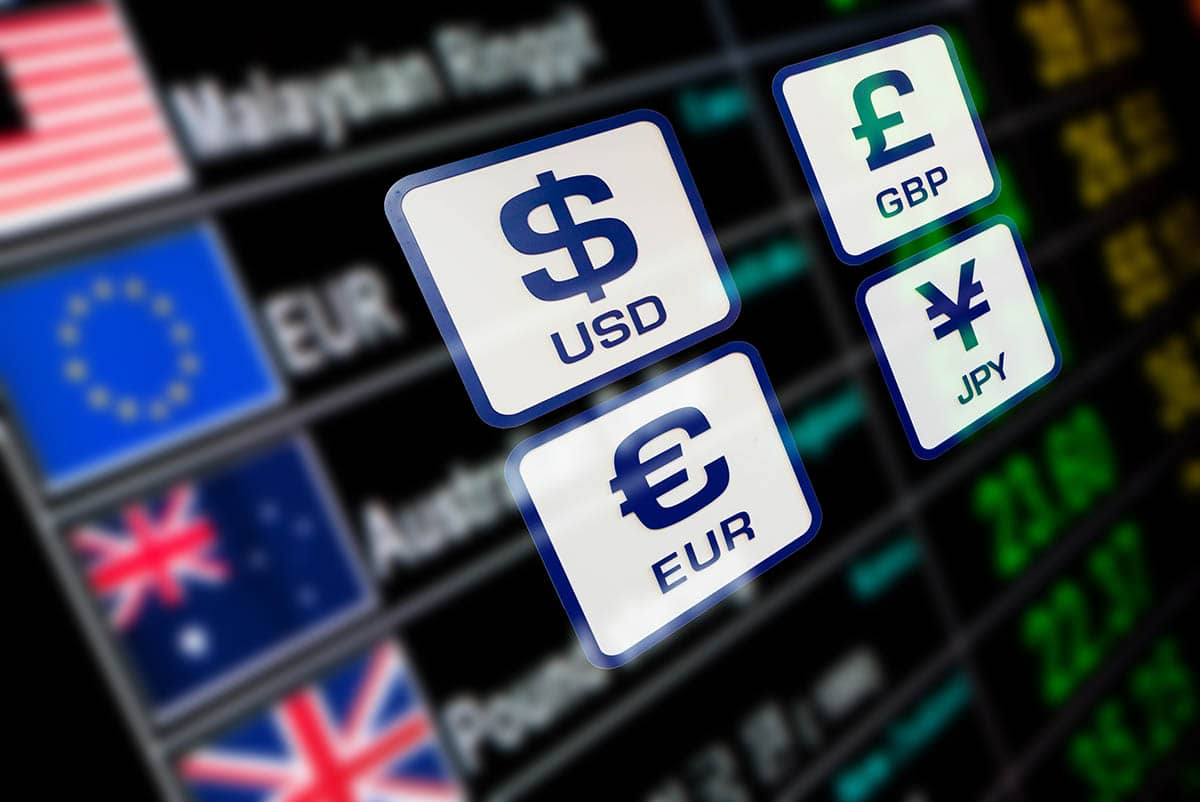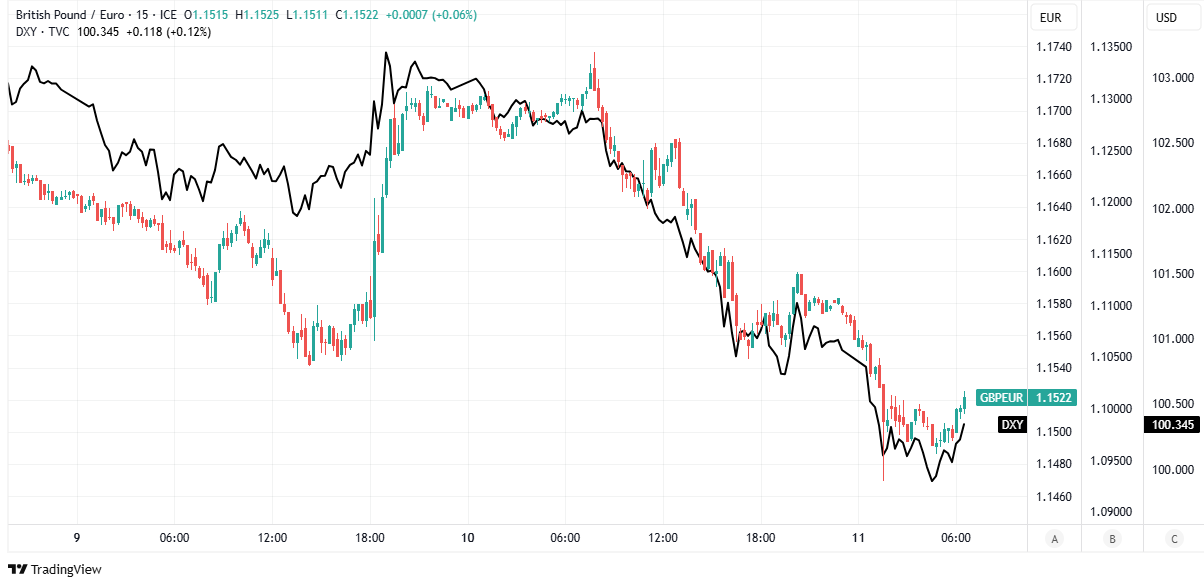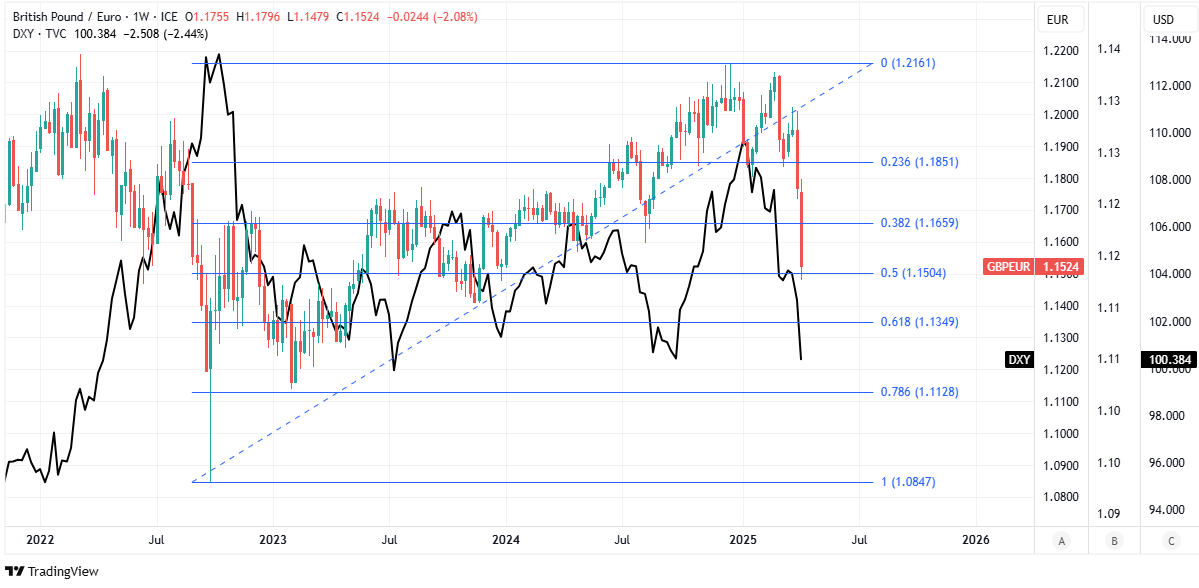
Image © Adobe Images
The Pound to Euro exchange rate was on course for its largest weekly loss since September 2022 on Friday following a rout in US Dollar rates and a parabolic rally by the single currency, with GBP/EUR now appearing set to trade in a narrow 1.1489 to 1.1543 range through the session ahead.
GBP/EUR fell as much as 0.83% in the Asia session overnight to reach lows at 1.1489 ahead of the London open, despite further intervening gains for GBP/EUR, with the slump resulting from a parabolic rally in a EUR/USD pair that rose as much as 1.5% to its highest since February 2022.
“[The Dollar Index] fell by a further 0.9% during the Asian trading session and is currently just above 100pts,” says Kristina Clifton, an economist and strategist at Commonwealth Bank of Australia. “EUR and JPY have risen the most against the USD since President Trump announced the Liberation Day tariffs on 2 April.”
The Pound to Euro rate's decline comes amid a rout in US Dollar rates, and in US stock markets, that has seen the currencies of current account surplus jurisdictions like the Euro Area, Switzerland and Japan surge by 2% or more against the greenback so far this week.
Above: GBP/EUR at 15-minute intervals alongside US Dollar Index. Click for closer inspection.
The unravelling is an apparent response to White House trade policy, which aims to reshore production of domestically-consumed goods.
That can be expected to erode the profits and margins of corporate America in at least the short-to-medium term, which renders indefensible the stratospheric, if not outrageous valuations that have prevailed across the pond since at least the beginning of the first administration helmed by Donald Trump, if not even longer.
The equity rout has acted as rocket fuel for the Euro, Swiss Franc and Japanese Yen, which has in turn exacerbated the ongoing declines in both the trade-weighted US Dollar and trade-weighted Renminbi, which fell far below Beijing’s floor for the currency in CHF/CNY, JPY/CNY and EUR/CNY previously on Thursday.
“In his first term President Trump was understood to view rising equity markets as a sign of his success. However, this time around President Trump seems unconcerned about the sharp fall in equities that has occurred because of his tariff announcements,” CBA’s Clifton says.
Above: GBP/EUR at weekly intervals with Fibonacci retracements of recovery from 2022 lows highlighting possible areas of support for Sterling, with US Dollar Index. Click for closer inspection.
“Prime Minister Georgia Meloni will meet with President Trump next week to negotiate lower tariffs for the EU. If it looks like countries are able to negotiate substantially lower tariffs then the downside risks to the US economy will lessen, supporting USD and weighing on EUR/USD,” Clifton adds.
The simultaneous sell-offs in US Dollar pairs and equity markets are mutually reinforcing and, together, they risk becoming self-perpetuating because as a rule of thumb, international equity investors rarely maintain anything more than partial hedges of their foreign exchange exposure.
This means that when the Dollar declines, the value of US stock investments also declines, which magnifies the overall portfolio losses when markets fall and becomes a reason for some investors to sell stocks if the Dollar declines, and vice versa.
However, there may also be mutual reinforcement between the declines of the trade-weighted Dollar and trade-weighted Renminbi because Beijing’s basket-based approach to its managed-float creates a correlation or quasi peg between the two.


